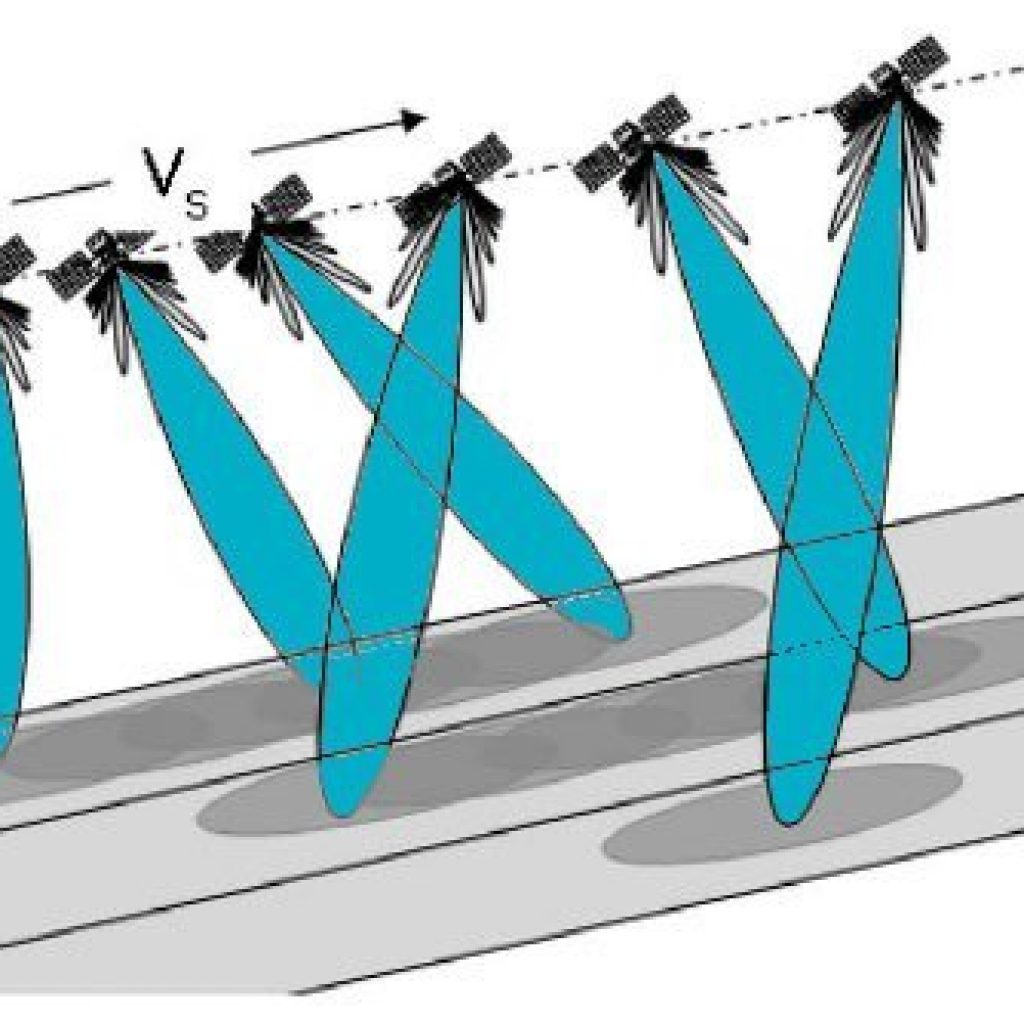TOPSAR: Novel Radar Technique
Sentinel-1 uses a cutting-edge SAR technique known as Terrain Observation with Progressive Scans SAR (TOPSAR).
TOPSAR enables the Extra Wide Swath (EW) and Interferometric Wide Swath (IW) modes and facilitates interferometric SAR. In these modes, bursts are synchronised from pass to pass to ensure the alignment of interferometric pairs. Interferometry uses more than one image of the same location to detect motion such as land deformation. Examples include studies of volcanoes, earthquakes, and sinkholes.
Intended to replace ScanSAR
TOPSAR mode is intended to replace the conventional ScanSAR mode, achieving the same coverage and resolution as ScanSAR, but with a nearly uniform Signal-to-Noise Ratio (SNR) and Distributed Target Ambiguity Ratio (DTAR).
Azimuth resolution is reduced compared to ScanSAR mode due to the shorter target illumination time of the burst. Using the sweeping azimuth pattern, each target is seen under the same antenna pattern, independently from its azimuth position in the burst image. By shrinking the azimuth antenna pattern, as seen by a target on the ground, scalloping effects on the image can be reduced. Bursts are synchronized from pass to pass to ensure the alignment of interferometric pairs.
For TOPSAR, the processing must handle the antenna steering rate and the DC rate due to the steering. The azimuth pre- and post-processing of the data must include deramping of the data prior to base-band DC estimation, azimuth ambiguity estimation, and GRD azimuth processing. Please see the technical note COPE-GSEG-EOPG-TN-14-0025 for details on how deramping is performed by the IPF.

By rapidly scanning sections of all sub-swaths in the direction the satellite is traveling, TOPSAR yields more consistent image quality. Figure: De Zan, F., & Guarnieri, A. M. (2006).
Sentinel-1A SAR Modes





